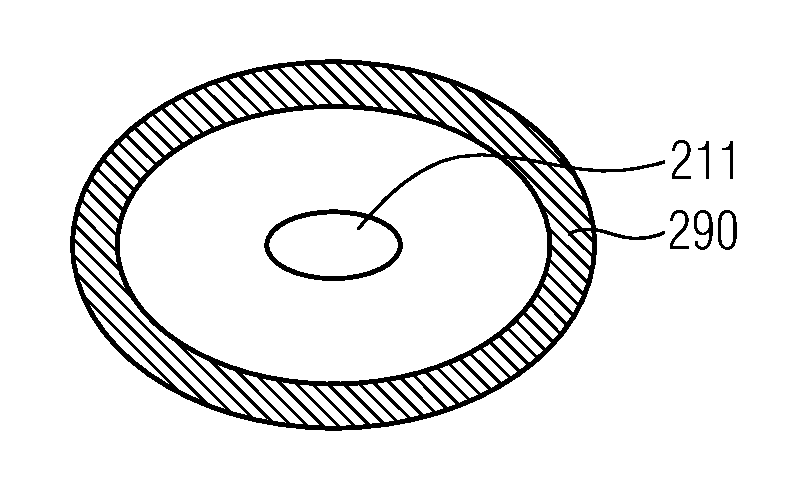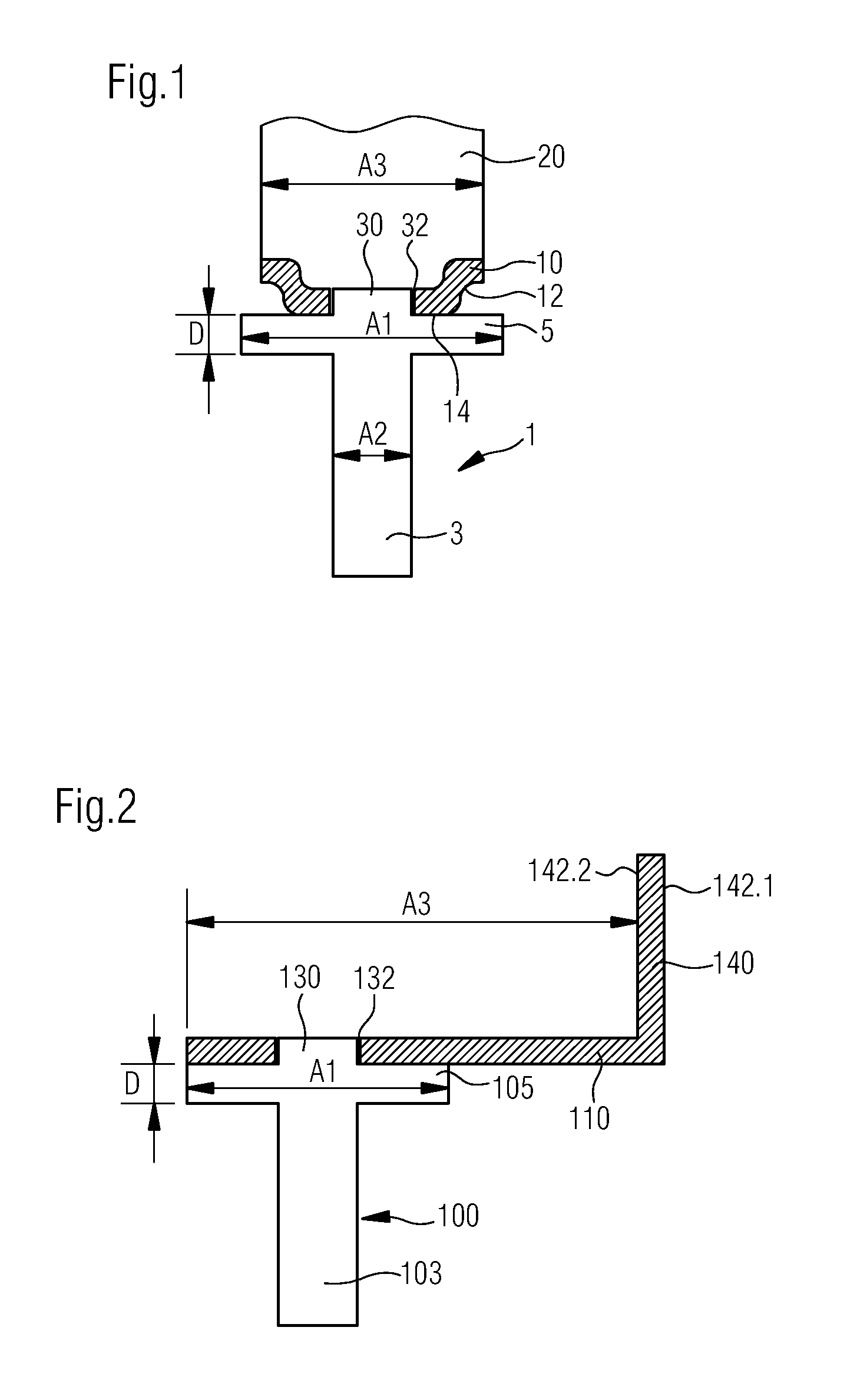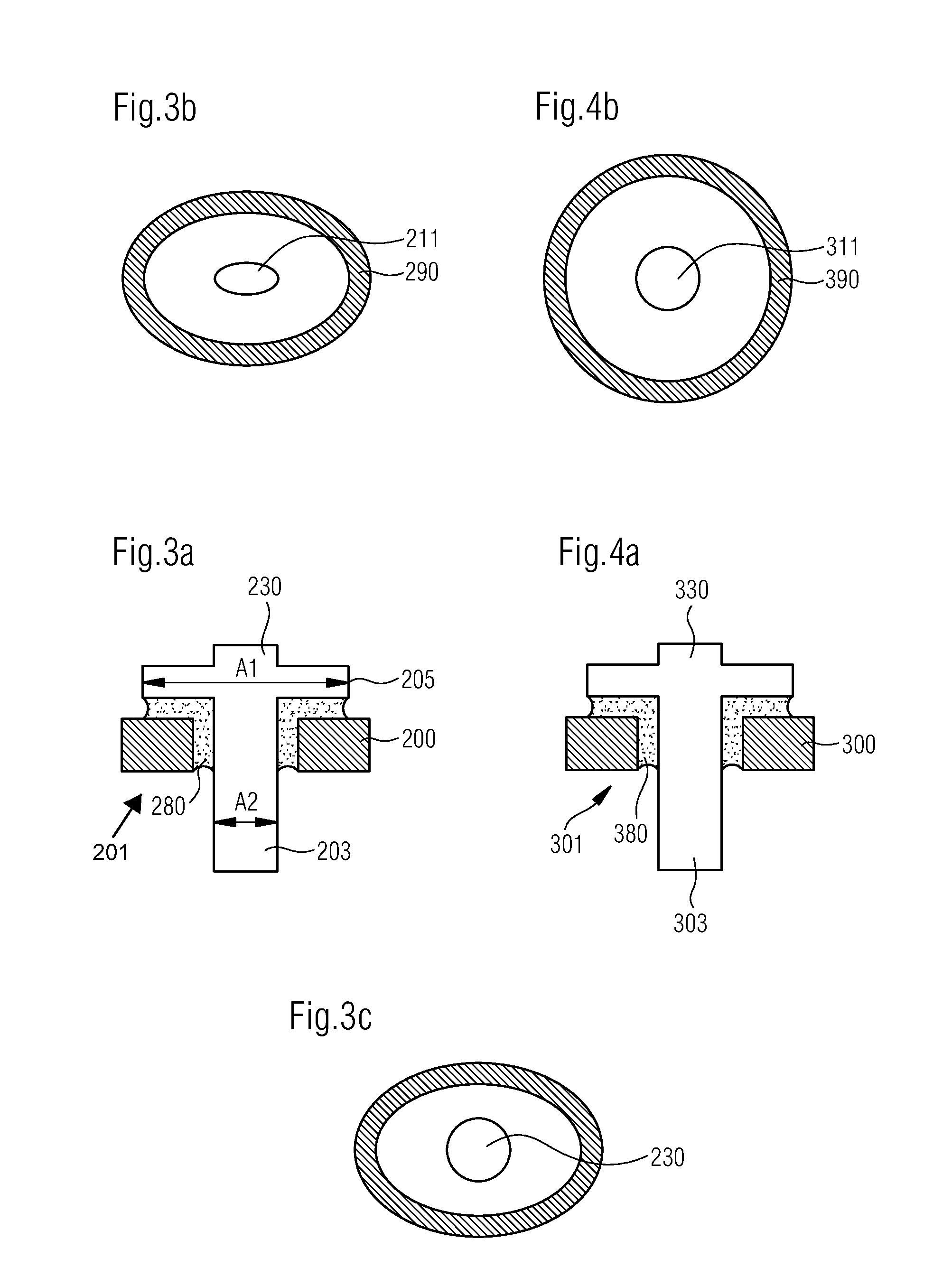Feed-through component
a technology of components and components, applied in the field of feed-through components, can solve problems such as problems in battery cells, and achieve the effects of avoiding leakage, increasing stability, and increasing the strength of the battery housing in the region where the sealing occurs
- Summary
- Abstract
- Description
- Claims
- Application Information
AI Technical Summary
Benefits of technology
Problems solved by technology
Method used
Image
Examples
Embodiment Construction
[0088]Referring now to the drawings, and more particularly to FIG. 1, there is shown a first embodiment of a feed-through component 1 with an electrode connecting component 10 which is connected with feed-through component 1. Electrode connecting component 10 is connected with electrode 20, which forms the cathode or anode of the electrochemical cell or respectively battery cell. The feed-through component includes an essentially pin-shaped conductor 3 as well as a head part 5. Head part 5 of the feed-through component has a thickness D as well as a dimension A1 essentially vertical to thickness D. As can be seen in FIG. 1, dimension A1 vertical to thickness D of component 5 is substantially greater, in other words, head component 5 or respectively head part 5 is a substantially flat component. Dimensions A2 of the essentially pin-shaped conductor 3 which is connected with the head part 5 are smaller than dimension A1 of the head part. Dimension A2 is, for example, the diameter of t...
PUM
| Property | Measurement | Unit |
|---|---|---|
| sealing temperatures | aaaaa | aaaaa |
| sealing temperatures | aaaaa | aaaaa |
| sealing temperatures | aaaaa | aaaaa |
Abstract
Description
Claims
Application Information
 Login to View More
Login to View More - R&D
- Intellectual Property
- Life Sciences
- Materials
- Tech Scout
- Unparalleled Data Quality
- Higher Quality Content
- 60% Fewer Hallucinations
Browse by: Latest US Patents, China's latest patents, Technical Efficacy Thesaurus, Application Domain, Technology Topic, Popular Technical Reports.
© 2025 PatSnap. All rights reserved.Legal|Privacy policy|Modern Slavery Act Transparency Statement|Sitemap|About US| Contact US: help@patsnap.com



